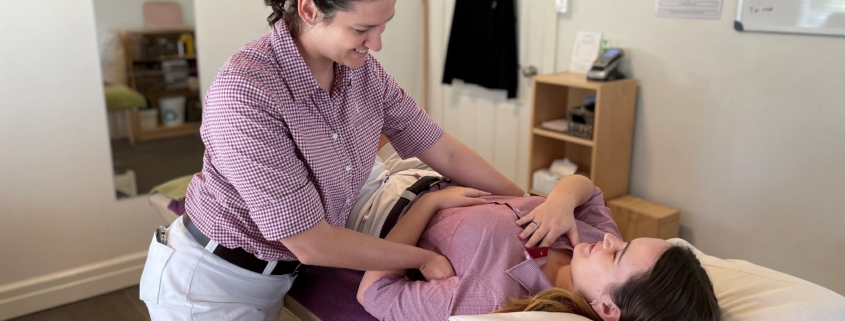An Introduction to the Anatomy of Breathing (with a focus on post-partum women)
Written by: Brittany Johnstone
One of the areas I’m very passionate about in Physiotherapy is helping women across the lifespan live their best pain free and happy lifestyle. That is why although this blog helps everyone create a better understanding of their breathing, there will be a particular focus on an introduction into considerations for breathing in post-partum women.
Breathing is the foundation of our system. When we breathe, our diaphragm and pelvic floor move together. Breathing does much more than help us stay alive (although that is very important). It: helps regulate intra-abdominal pressure (to avoid hernias, prolapse, back pain), changes our stress hormones through the parasympathetic nervous system and promotes healing and tissue repair by increasing oxygen in our system.
When you breathe, muscle recruitment depends on the way you breathe and if you are in a resting breathing state (relaxed) or active breathing state (intense exercise etc).
Muscles of Respiration:
- Diaphragm (the primary muscle of inspiration (breathing in)
- Serratus Anterior (will activate when you take a big breathe in, but not into your neck and shoulders)
- Sternocleidomastoid + Scalene (helps with a shallow breathing pattern, breathing into your neck and shoulders)
Note: If your scalenes are tight from a shallow breathing pattern this can put pressure on your brachial plexus (arm nerves) and contribute to neck pain and nerve irritation, one of the reasons assessing breathing pattern is important.
Expanding our Diaphragm
Correct Diaphragm expansion helps to relax our deep hip flexors, lower back muscles and spinal muscles whilst activating our core and pelvic floor evenly. This helps to decrease neck, lower back and sacroiliac (SI) pain, naturally lengthen and strengthen the pelvic floor and resolve rectus diastasis by lengthening and strengthening the abdominals.
Postpartum women
When assessing postpartum women, the following considerations are needed for the core and diaphragm. During pregnancy the diaphragm gets pushed up and ribs gets pushed out, taking a deep breath in or out completely can be difficulty and the back can tighten to offset baby weight. Therefore the goals for the core and diaphragm post-partum are for the ribs to be back at a 90 degree angle, a regain of abdominal control to provide tension for the diaphragm and relearning how to optimize the diaphragm muscle into a deep breathing pattern.
Want our help?
If this sounds like something you or someone you know needs help with or if you are experiencing any muscle, joint or possible nerve irritation please contact us. We can determine if it is a musculoskeletal issue before having to see a GP. The clinic is open 5 days a week and a couple Saturdays a month. Please call us at 1300 842 850 or Click here to book an appointment.








Leave a Reply
Want to join the discussion?Feel free to contribute!